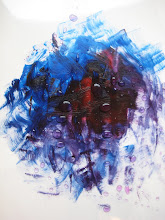 Jenny Saville is a British artist known for her paintings of naked obese women. She confronts and challenges notions of beauty and mocks the conventional stereotypes of how a woman is traditionally thought of (of course these are only some of her themes). She forces one to question the societal obsession with the idealized image of females, mainly that she must be slim and petite. I think at some point she also forces us to examine ourselves, our own views, and the society and culture we live in.
Jenny Saville is a British artist known for her paintings of naked obese women. She confronts and challenges notions of beauty and mocks the conventional stereotypes of how a woman is traditionally thought of (of course these are only some of her themes). She forces one to question the societal obsession with the idealized image of females, mainly that she must be slim and petite. I think at some point she also forces us to examine ourselves, our own views, and the society and culture we live in.Saville is very courageous and direct in her work, and the fact that her paintings are usually at a very large scale emphasizes that. Her work is unconventional and controversial in some respect. However, she continues with her style as she displays an almost disgusting truth to the public.
The fascinating thing about Saville is that her work is somewhat out of place in a culture so obssesed with youth and beauty and thinness, and for this reason it stands out. Her work is unconventional as she does not veiw women as delicate beings, but as sufferers and possibaly survivors. She incorporates women's struggle with beauty through her work. Although the artist paints somewhat morbid images, I think her use of oil paints is actually very beautiful. Her paintings of the human body are extremely accurate from aspects such as the body's form and shape to its tone and colour. They give a highly sensual impression of the surface of the skin and the mass of the body. She uses colours such as whites and pinks as well as browns and reds to give a very physical and fleshy feeling. She draws attention to certain areas of the body with her use of streaks of bright colours. With this she shamelessly emphasizes on aspects of the female body.
Through her images and painting style she creates a complicated discomfort for the the viewers. I personally feel her works are those I don't want to look at but actually can't stop staring at (if you know what i mean). The details are somewhat disturbing, yet it is all you can look at.
I personally like her paintings more than her photographs, mainly because i love her style, especially her use of strong urgent brush strokes. Jenny Saville is a great refrence to those interesting in oil painting, the human body, and themes associated with the portrayal of women in society.
































